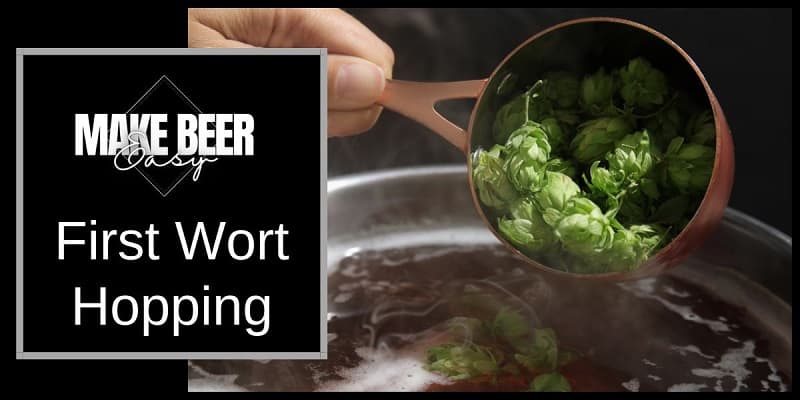First wort hopping is a brewing technique that has recently gained popularity among homebrewers and commercial brewers alike. It involves adding hops to the wort before the boil begins, resulting in a unique and complex flavor profile. In this article, we’ll explore what first wort hopping is, how to do it, what kind of hops to use, the benefits of this technique, and who discovered it.
What is First Wort Hopping?
First wort hopping is a brewing technique that involves adding hops to the wort as it is transferred from the mash tun to the kettle. This is done before the wort is boiled, meaning that the hops are in contact with the wort for a longer period than in traditional hopping methods. The result is a smoother, more balanced bitterness and a more complex hop flavor and aroma.
Who Discovered First Wort Hopping?
The history of first wort hopping is murky, but it is believed to have originated in Germany in the early 20th century. Some sources credit the technique to a German brewer named George Schneider, while others attribute it to the brewers at the Weihenstephan brewery. Regardless of its origins, first wort hopping has become a popular technique among brewers worldwide.
How To Do First Wort Hopping
To do first wort hopping, you’ll need to add hops to the wort as it is being transferred from the mash tun to the kettle. This is typically done by placing the hops in a hop bag or directly into the kettle as the wort is being transferred. The amount of hops used will depend on the recipe and the desired flavor profile but typically ranges from 0.5 to 1.5 ounces per gallon of wort.

Once the hops have been added, the wort is brought to a boil as usual. The hops that were added during first wort hopping will contribute bitterness, flavor, and aroma to the finished beer.
What Style of Hops to Use When First Wort Hopping?
When choosing the type of hops for first wort hopping, it’s essential to consider the desired flavor profile of the finished beer. Some hops are better suited for first wort hopping than others, as they can contribute a smoother bitterness and more complex flavor and aroma.
Noble hops, such as Hallertau, Saaz, and Tettnang, are popular choices for first wort hopping, as they have a low alpha acid content and a delicate, floral aroma. However, other hops, such as Cascade and Centennial, can also work well in first wort hopping, contributing a more assertive hop flavor and aroma.
Benefits of First Wort Hopping
There are several benefits to using first wort hopping in your brewing process. First and foremost, it can result in a smoother, more balanced bitterness in the finished beer. Because the hops are in contact with the wort for a more extended period of time, they can contribute bitterness without the harshness that can come from traditional hopping methods.
In addition to the smoother bitterness, first wort hopping can contribute a more complex hop flavor and aroma to the finished beer. This can be especially beneficial for hop-forward styles such as IPAs and pale ales.
Another benefit of first wort hopping is that it can help to improve the clarity of the finished beer. Because the
It is worth noting that while first wort hopping can enhance the aroma and flavor of the beer, it is just one of many techniques used in brewing.
Other popular hopping methods include:
– dry hopping,
– hop bursting,
– and hopback hopping,
all of which involve adding hops at different points in the brewing process to achieve different results.
Additionally, while first wort hopping is a widespread technique, it is only suitable for some beer styles, and some brewers prefer to stick to more traditional hop additions.
Last Call
The basics of first wort hopping is that it is a straightforward technique used in brewing beer that involves adding hops to the wort during the lautering process before the wort is boiled.
If you’re interested in trying out first wort hopping, give it a try, and with some practice and experimentation, you may find it becomes your go-to way to add some subtle bitterness, aroma, and flavor to your brews.
P.S. Be sure to pick up your gift from Big Robb and grab his top 5 favorite beer recipes from his brewpub. Details are on the side of the blog or at the bottom if you are on your phone. Cheers!
